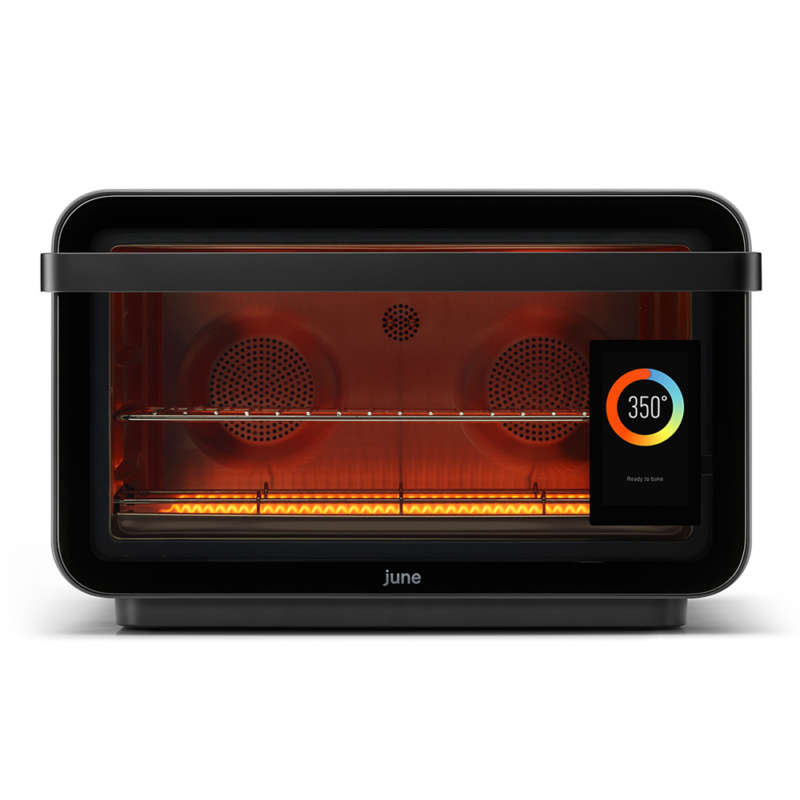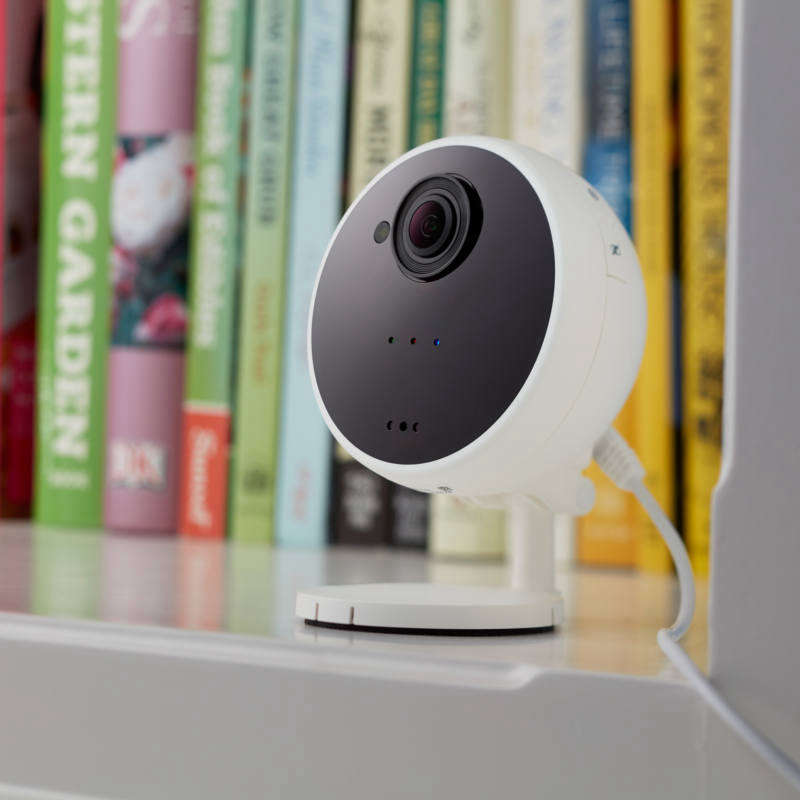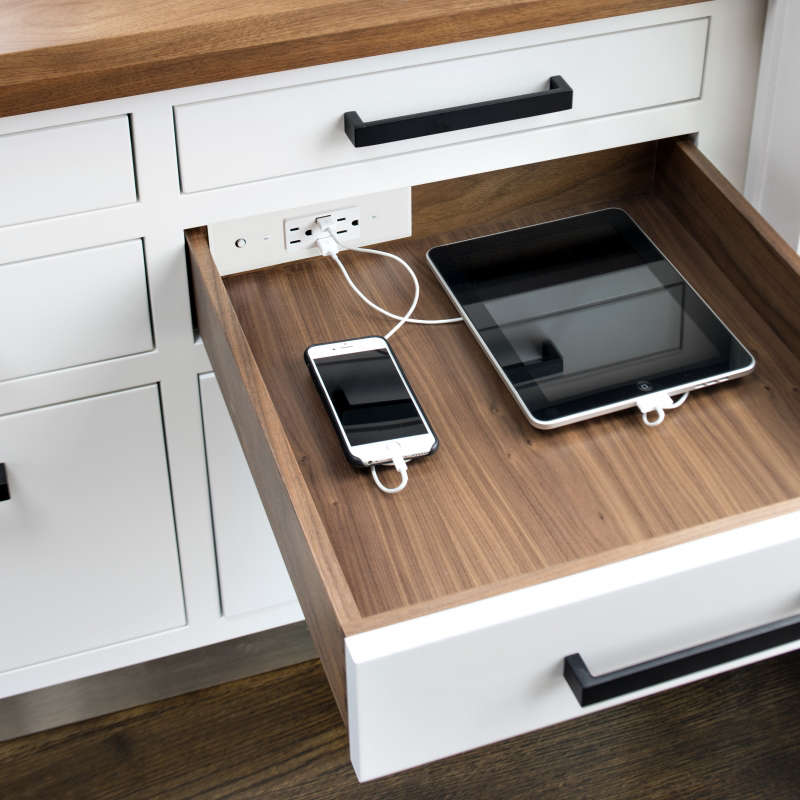It sounds like something we’d see in the Jetsons’ house: window shades that glide up and down at the mere touch of a button. In fact, remote-control shades aren’t so new; what’s new is that now you can control your shades using a smartphone—wherever you happen to be.

Why should I buy a smart window shade?
Being able to open and close a shade by remote control is especially useful when a window is hard to reach—perhaps in a stairwell, or behind bulky furniture.
But there are other scenarios where a smart window shade comes in handy. Hope Dana, of New York–based Platt Dana Architects, just installed them in all 18 windows of her own apartment in Dumbo, Brooklyn, and enjoys being able to use her smartphone to close the shades when she’s not home. “Let’s say it was cloudy when I went out, so I didn’t close the shades, but now the sun is streaming in and I’m worrying about the apartment getting too hot. With smart shades, I can close them wherever I am,” she says. Security is another benefit: While you’re away on vacation, you can raise and lower the shades at random times to give the illusion that there’s still someone home.
And many homeowners fall for the sheer convenience. You can schedule your shades to automatically go up and down daily at certain hours. “Our apartment is right on the East River,” Dana says, “so we get a lot of reflection. When we’re not home, we set the shades to go down three hours before sunset so the place doesn’t overheat.” And a plus for perfectionists: If you have multiple smart window shades, they’ll be perfectly aligned and in sync when raised and lowered.
How do I choose the best smart window shades?
Take some time to read up on what’s available, including reviews on tech sites and customer feedback. To date, there aren’t a lot of options available. Bali sells smart blinds with “motorized lift” and shades with “motorized tilt,” all powered by Somfy technology. Hunter Douglas’s PowerView motorization offers either top-down or bottom-up movement. Pella makes programmable between-the-glass Insynctive blinds and shades.
However, these options can only be bought from an authorized dealer and lack a wide range of integration options; several must be custom-installed. The tech site Gearbrain suggests that Lutron currently offers the only complete order-online DIY system with its Serena shades. (More on that DIY later.) And after weighing various options, a CNET reviewer comes down in favor of Lutron, noting the Serena shades’ quiet motor, responsiveness, and superior app interface. “Lutron is the only company I considered,” says Dana. “The AV guy we work with—Larry Abrams of Audio Interiors—highly recommends them. We’ve installed them in dozens of our projects, and everyone loves them.”

Can I integrate other smart-home devices with my smart window shades?
Yes. If you already have a smart-home system, that will influence which smart shades you choose. Otherwise, you’ll need to purchase a smart-home wireless hub that’s compatible with your shades. Once your shades are connected, you can link them to your lighting system, so the lights will come up as the shades go down, or to a smart thermostat so the shades will automatically close when the room temp goes above, say, 72 degrees. You can schedule the shades to close when you leave home, or every evening at sunset (and since they’re smart, they can adjust to the time of year). If you opt for Lutron shades, you’ll be able to ask Siri or Alexa to operate your shades.
What should I consider when choosing my smart window shades?
Be prepared to make a lot of choices. Once you’ve decided on the manufacturer, consult the website to see if you can order them online and what’s available. Depending on the brand, you can choose from a range of styles (such as standard roller, honeycomb, cellular, pleated, or Roman); valances and headrail designs; power sources (battery or plug-in); fabrics (from sheer to blackout); colors (swatches may be available); types of remote control; and more. And, not to complicate things, but your shades don’t all have to be the same. You might choose translucent for your living room, blackout for bedrooms, and different colors for different rooms.
Many manufacturers provide in-home shopping assistance: Pella, for example, offers a consultation to help you choose the right product and installation method. If you find Lutron’s Design a Shade page overwhelming, you can get a company specialist to walk you through it by phone—or, if you live in New York, New Jersey, or Pennsylvania, to drop by and help you measure your windows and make a selection (this in-home consultation service costs $99).
And note that after all those decisions, you still need measure meticulously before you’re ready to order—or get someone in to do it.
Can I install the smart window shades myself?
Not all smart window shades are DIY; Pella and Hunter Douglas require custom installation. And if you choose do it yourself, getting the shades up and connected to your Wi-Fi can be tricky.
But while some reviewers gripe about Lutron shades—Gearbrain calls it a “strenuous install”—others claim it’s “incredibly easy.” Customers in New York, New Jersey, and Pennsylvania can get Lutron to do the installation (up to 10 shades for $199)—and if you’ve used their in-home consultation service beforehand, you’ll get a $99 rebate when the work is complete.

How much do smart window shades cost?
They’re not inexpensive. Obviously, the price will depend on your selections and window sizes, and it’s hard to know the total until you’ve gone through the ordering process. By Gearbrain’s estimate, a single shade can cost at least $350, and the price can go up steeply from there. You may also need to add installation fees.
Are there other advantages to smart window shades?
For one thing, shades without cords are safer for households with young children—and for pets.
Well-fitting shades can conserve energy and save you money. The honeycomb-style shades in particular have excellent insulating properties, with built-in air pockets, multiple layers, and sometimes even aluminum lining. So keeping the shades drawn will help make your rooms cooler on summer days and warmer in winter (windows allow a lot of heat to escape). Homeowners also praise the shades’ room-darkening abilities.
Despite his critique of the selection and installation process, it only took the Gearbrain reviewer a few weeks of use before he pronounced the Serena shades “the smartest smart home product I’ve encountered.” And Hope Dana says, “They’re synchronized, and it’s thrilling to watch them go up and down together.” George Jetson would agree.
More smart home devices to go with your smart shades:
- Remodeling 101: Smart Air Purifiers
- Remodeling 101: Wireless Indoor Home Security Cameras
- Remodeling 101: Smart In-Wall Dimmer Switches







Have a Question or Comment About This Post?
Join the conversation